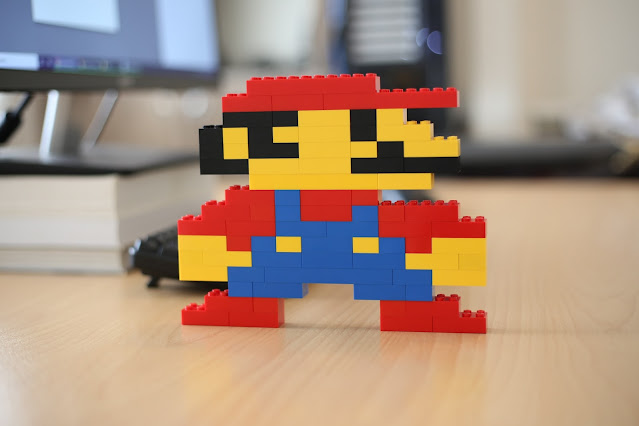For Aspiring UX Designers: 11 Things You Must Know about UX Design Career!
The most intriguing but perhaps also most delusional thing about User Experience Design is that it's not just a single one-track career option like law, medicine, engineering, or finance.
Surprisingly instead, UX is actually a collection of a holistic host of careers that all tend to focus on the basic needs, aspirations, and experiences of the users using a product or a service. This collection is largely centered at the point where users meet technology, where people meet digital interfaces, and where you and I encounter digital devices on a daily basis.
To save time, you can jump to a section from:
1. The Focus of UX Career
Specifically, the most common careers in this modern field currently focus on people and their use of things with screens, be it desktops or laptops, computers, tablets, e-readers, surface screens, appliance interfaces, transit interfaces or mobile devices, or wearable devices just to name a few before our world is totally encompassed of internet of things.
Imagine how cool it will be when our furniture will have digital interfaces, for instance, our beds start informing us of our sleep quality, our wardrobes keeping a track of our clothing, and our dining tables keeping a track of our calories!
2. The Goal of UX Career
Regardless of the exact tech sector that you may find yourself focusing on in your User Experience career, your long-term mission will remain the same i.e. you'll be focusing on countless ways to improve the interaction or communication that people have with technology on a day-to-day basis.
This is in order to make sure that their wants and needs are met without any complexity, difficulties, or frustrations. You will help to make sure that people can understand how a particular digital product's or service’s technology works, that the product meets their expectations and needs, and also that the product delights them.
Because a delightful visual & functional User Experience surely lifts the value of a product and helps ensure trust between the user and the product.
3. Where to Start?
So, User Experience sounds like a potentially great field to be part of, am I right? So, you must be wondering where to start?
As it is said when you gotta start, start at the very beginning.
4. Do I need a Formal Degree?
You do certainly need an undergraduate degree but seriously for design, degrees don’t matter as much as the skills and experience matter.
At some schools and colleges, there are undergraduate degrees in specific aspects of user experience but as it is a recently growing field you might not find many to start with.
These degrees may be found in schools of design clubbed with other design fields such as graphic design, industrial design, product design, computer science degrees with web and app development, or a humanities course in human psychology or something else.
You may also find degrees that have the design in the name like Masters in Design or Bachelors in Design, or have a name related to HCI, short for human-computer interaction or human factors which can be masters, a diploma or bachelors or masters in science.
You can check out 'Top UX Schools' for some post-graduation courses from reputed colleges.
5. What if I don't want a Formal Degree?
Although these degrees could certainly offer rich User Experience learning, you don't seriously need to have one of these UX degrees to practice UX Design or Research.
In fact, you may have an undergraduate degree in just about anything like Hotel Management, Business, Finance, Economics, Architecture, or anything to do with user experience.
Regardless of your starting point in your career, you can boost up your UX knowledge while on the job you currently have through reading books on Design, articles, and blog posts by professionals in this field, with formal and informal online training through Ed-Tech platforms such as Coursera (my personal favorite is the Google UX Design Professional Certificate), Udemy, Lynda or Linkedin Learning, interaction design foundation, with mentorship or professional training which can be sort of tough to find but will be great if you could establish such a strong network in this field.
I would advise you to find a way to learn that is apt for you, that resonates with whatever your learning style may be like through online classes or reading or practicing and experience, and that fits just well within your life and your career.
6. A Word of Caution
One word of caution is that you shouldn't choose training in this field just because you're told that you'll receive a certificate or certification upon completion which is a current trend visible on a lot of LinkedIn profiles. These certifications won’t get you a job, your skills and your value additions to a company or product will get you a job.
While some quality training platforms may promote and advertise themselves as offering these certifications, it's ‘what’ you are learning, absorbing, and exploring in UX that is far more important than any paper or pdf of certificate or certification.
In fact, it is believed worldwide that there is no widely accepted standard within the field of UX for either specific certificates or certifications while applying for these roles in a company.
On the topic of college degrees, while you seriously don't need a Master's degree for most UX fields, it certainly can't hurt, but can add additional value by giving you an environment of learning with professional guidance and college facilities and thus can make you stand out in a crowd of applicants.
A Master's degree in some aspect of UX is a bonus to be considered, but not absolutely necessary in my opinion. I have known many of my friends who have transitioned from Architecture, Business Administration, Biology, Finance, Hotel Management, English Literature, and Psychology to the field of product design and user experience design.
All it takes is the willingness to learn, empathy towards the user, a little bit of inclination towards technology, and a lot of passion for design.
In conclusion, before we end this introduction to User Experience, I want to point out one other very special thing about this field that goes far beyond the work and the job.
7. UX is a 'Community'
UX and UI is also a community of practitioners, students, learners, and professionals who meet at meetups all throughout the world, and who are connected globally through many organizations like the User Experience Professional Association, or UXPA, the Interaction Design Association, or IXDA, and much more growing every day.
It is best to join the UX community for the upliftment of your career and also to find a bunch of cool passionate people who will be more than happy to share their knowledge, experiences, mistakes, and maybe just life experiences.
Most importantly don’t forget to have fun.
Find something locally, nationally, or internationally, and through networking, building long-lasting relationships, and sharing with your fellows, you will soon find yourself a part of something very special, and trendy.
Who knows you might bring about a change in someone’s life because I believe that’s the ultimate goal of this field and perhaps our lives too!
8. Three Umbrellas of UX Career: Design, Research, and Strategy
It's time to deepen our understanding of the framework that comprises most of all UX jobs on earth right now. There are three primary types of UX careers: design-based, research and evaluation oriented, and strategic design careers.
In a perfect world, It would be pretty easy to understand each career track if every type of UX job was purely into one of those three umbrellas. While truly this is not the case, it is still possible to generally combine certain types of UX jobs.
Design is often the first field that everyone thinks about when they come across user experience work and jobs. It's too mainstream nowadays.
Also, not just design for the sake of visual beauty and delight, but for the users who will be interacting with a product.
Currently, UX careers and jobs are largely focused on products with screens which means that design is often related to websites, software, or mobile apps, although it can involve wearables and the Internet of Things which is a highly evolving industry.
9. UX Design-Related Careers
On a broader part, we have a plethora of design-related careers.
First, is interaction design which primarily focuses on the elements of a digital screen and how people interact with those elements to comprehend and then design the website or mobile application.
Then there is information architecture, which focuses on the organization of information or data, consisting of what a user sees live on the screen and background elements that are organized behind the scenes like keywords, tags, images, flow structure, etc.
Next, we have a visual design or UI design, which focuses on the creation of polished, attractive designs through the use of color, imagery, space, and typography in whatever way will be most appreciated by product users.
Then we have information design, which includes the construction of web content along with any associated visualizations that are used to provide better meaning for the content.
And when the content is very technical but needs to be explained to be understood appropriately by users, we have what is called technical communication.
As I said before, these design career tracks as of today are largely screen-based, although it's possible that any one of them can extend beyond the screen.
One design career track that most openly goes beyond the screen is service design, which focuses on the design of the entirety of the customer experience, looking at all interactions that a customer has with the company.
























